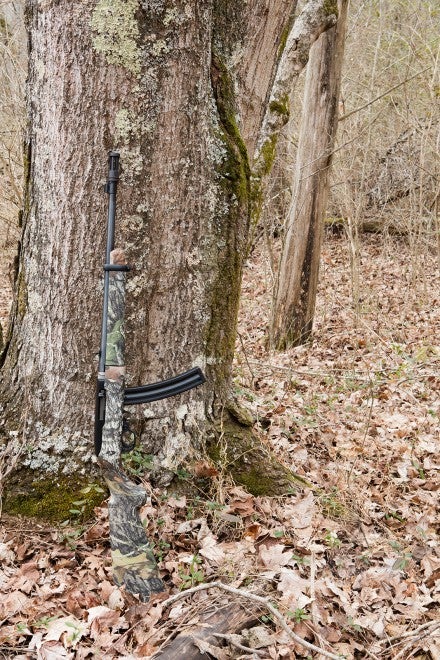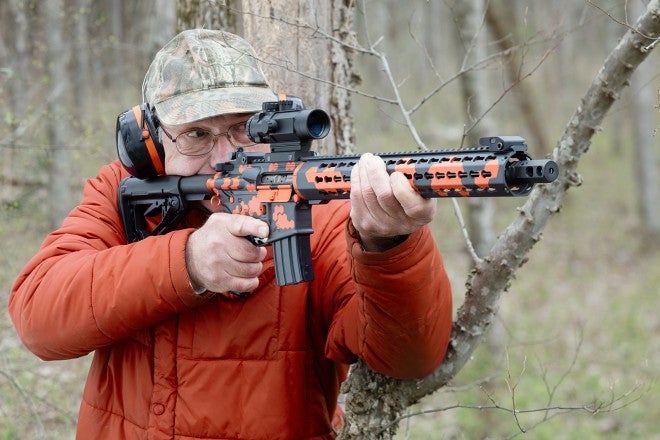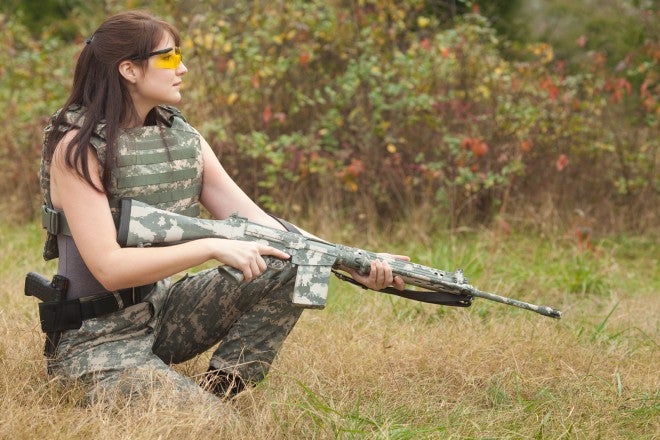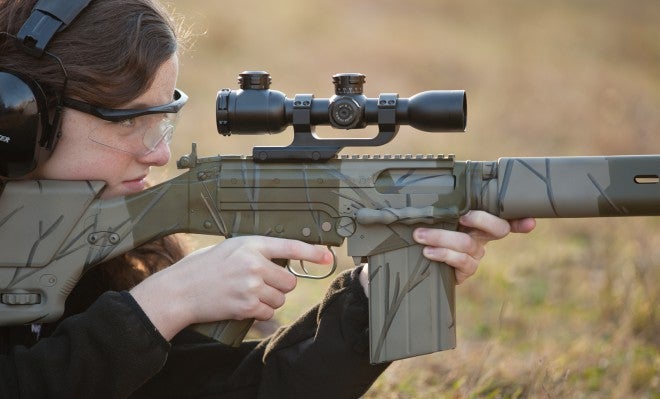Camouflage Patterns on Guns: to Hide or to Flaunt?
Oleg Volk 03.23.16

This takedown 10-22 is a typical rifle with wrapped camouflage. It blends almost perfectly with the Fall foliage and would be as easy to hide from squirrels as it would be to lose in the woods if set down against a tree. The plethora of research into what animals and, particularly deer, see gives up a couple of options for hunting camouflage. One of them is shown above.
The other option is to break up the outline of the rifle but use colors highly visible to people (such as orange or red) that aren’t perceptible to the deer. This one, made by Fighting Sheepdog, is very visible to other hunters to avoid friendly fire, much less visible to deer. Of course, it would help if the hunter’s jacket was also camouflaged in a similar manner.
Smaller patterns in camouflage are very terrain-dependent. This rifle would look inconspicuous in a tundra, but look at it in a greener environment!
A more realistic solution may be to break up the overall shape of a weapon without blending it into the background completely. Larger shapes remain visible but don’t readily evoke a long gun.
Obviously, the scope and the hunter’s outfit would have to be matched to the weapon; solid hues other than earth tones tend to stand out in the wild.The scale would have to be thought out based on the vision resolution of the prey. Turkey camo requires far smaller details than something meant to fool a pig. Camouflage must be used in conjunction with motion discipline; much of nature pays attention to motion more than to detail. At its most extreme, camouflage doesn’t even try to hide but only to mis-direct.
So the advantages of concealing camouflage come at a cost of increased risk of friendly fire during certain types of hunting. Does the mitigation of that risk justify the inclusion of red or orange into the pattern on the rifle, the hunter, or both?




